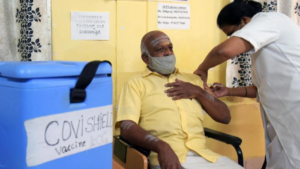
The scientists have predicted about the second wave of Covid-19 in India based on the calculations from the mathematical model, which iterated about the peak to be by mid-April, post which there may be a decline by May end.
The mathematical approach, SUTRA, as anticipated last year with the initial spike to be in August, which would surge further by September and then drop down by February this year.
Mahindra Agrawal, a scientist, Indian Institute of Technology (IIT) Kanpur had applied the model for predictions to find out the status of the current surge in Covid-19 cases and discovered that the number of daily new infections will peak by mid-April.
Agrawal revealed to news agency PTI, “For the last several days, we have found that there is a reasonable chance that the cases in India could peak sometime between 15-20 April. It is a sharp slope, but on the way down, it would likely be equally sharp, coming down very fast and by end of May see a dramatic reduction.”
He further stated about the uncertainty towards predicting the peak of the rising new cases. He added, “Currently, it is coming to 1 lakh infections per day, but this can go up or down. But the timing remains the same between April 15-20.”
According to the scientists, the first state to be affected by Covid-19 would be Punjab, after which Maharashtra will be the next state.
Though Agarwal mentioned that the predictions of the model are sensitive to the data of the new infections. He said, “Even a little bit of change each day causes the peak numbers to change by several thousand numbers. But the location of the peak has remained on mid-April.”
Several independent calculations from other scientists like Gautam Menon from Ashoka University also predicted about the surge of the second wave of Covid-19 infections could be between mid-April to mid-May.
Menon said to PTI news agency, “Any excessively precise prediction, of a peak within just a 5-day window, would ignore the many uncertainties associated with the inputs to any such calculation.”
Agrawal mentioned about the three parameters used in the SUTRA model for predictions saying, “The first is called Beta, or contact rate, which measures how many people an infected person infects per day. It is related to the R-naught value, which is the number of people an infected person spreads the virus to over the course of their infection.”
The other two parameters are ‘Reach’ which indicates the exposure level of the population due to Covid-19 and ‘Epsilon’ which is a ratio of detected and undetected Covid-19 cases, said Mahindra.
He said, “The reason we had to introduce ‘Reach’ is that unlike earlier pandemics which start at a location and suddenly spread fast across a place, in Covid-19, the spread of the pandemic has been slower due to the many protective measures in place.”
Agrawal further added, “Since the detected cases are quarantined, we assume they no longer contribute to new infections. So a growing number of daily new cases, reflect larger undetected infections. By measuring the number of new cases each day, we try to estimate the undetected and asymptomatic infections.”
Ramanagara:In the Channapatna by-election, CP Yogeshwar secured a decisive victory. Despite switching from the BJP… Read More
Ballari:Congress candidate Annapoorna Tukaram has achieved a resounding victory in the Sandur Assembly by-election. Sources… Read More
Perth: India’s stand-in captain Jasprit Bumrah delivered a stellar performance in the ongoing Perth Test,… Read More
Davanagere: Sharath G.N. (34), the owner of the competitive exam training center Copper Edge Group… Read More
As seasons change, so do health risks. Here are essential tips to maintain your well-being… Read More
This website uses cookies.
Leave a Comment